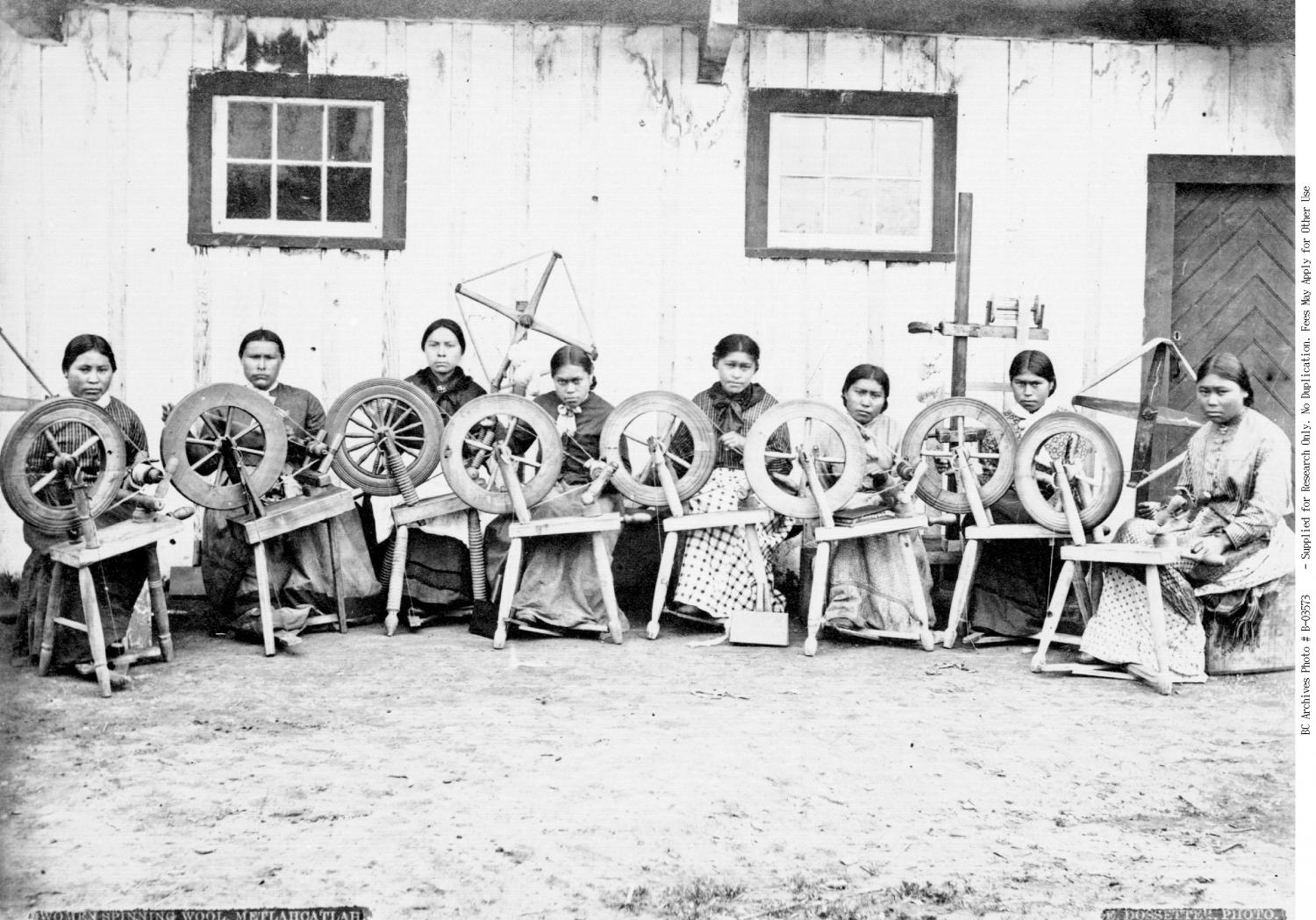The Metlakatla Experiment
British missionary William Duncan starts an Indigenous Christian utopia among the Tsimshian
Date: 1857
From their advantageous position near the mouth of the Skeena River, between modern-day Terrace and Prince Rupert, the Tsimshian had engaged with European traders since the 18th century, often acting as a middleman between them and inland First Nations. The Tsimshian prospered while being spared the worst consequences of colonialism — until 1836, when a smallpox outbreak swept through their tribes, killing a third of their population and upending Tsimshian society.
The nation was still reeling from profound loss in 1857 when a British missionary named William Duncan arrived at the nearby Hudson’s Bay Company (HBC) outpost of Fort Simpson, now known as Lax Ka’alaams. An emissary of the Anglican Church Missionary Society (CMS), Duncan had spent the previous half-year becoming acquainted with Tsimshian spiritual practices and learning their language from a Tsimshian named Arthur Wellington Clah before he began preaching in June 1858. This intimate understanding of Tsimshian culture helped Duncan gain converts by drawing links between their own spiritual and religious beliefs and stories from the Bible.
Duncan’s arrival coincided with another tectonic shift in Tsimshian society. After the HBC established Fort Victoria on Vancouver Island in 1843, the bulk of the region’s trade went south, and the Tsimshians’ position of influence was undermined. For those concerned, the white missionary seemed to offer an alternative, a way to assert their own agency. Tsimshian chiefs remained wary of Duncan and his message of Christian brotherhood but, recognizing the man’s budding popularity among their people, largely stayed out of his way.
However, Duncan had his own plans — a dream of establishing a Christian utopia, peopled by “his Natives.” With white picket fences and an industrious populace, this settlement would serve as proof of the church’s conviction that the “Natives” could be “civilized.” Duncan settled on the site of a former Tsimshian village, Metlakatla, as the location for his paradise. But in May 1862, as Duncan and his converts were about to set off, word reached Fort Simpson: disaster had struck Victoria. Smallpox had returned. Memories of the community’s staggering loss came roaring back. Now, the idea of Metlakatla was no longer just a way to find order in chaos; it had become a method of survival, a chance to avoid the devastation wreaked by the virus. What was supposed to be a small settlement of 50 faithful converts swelled into a full-fledged society of 350.
By 1879, the community had grown to more than a thousand residents, operating around ideals of Christian brotherhood and an acceptance of capitalism. But slowly Metlakatla unravelled — in part because of Duncan himself. He no longer trusted the Canadian government, and a schism had erupted between himself and his former employer, the CMS, which had gone in a more orthodox, ritual-heavy direction since Duncan's arrival in British Columbia. This sectarian split came to divide the town itself, as individual Tsimshians chose whether to ally themselves with their original apostle or the CMS. Violence erupted as rival groups fought for control of the former utopia.
In 1887, the town had reached a breaking point. Duncan and 600 of his followers left B.C. for Annette Island in Alaska, setting down new roots in an old Tlingit Village they christened New Metlakatla. But a large number of Tsimshian stayed behind. Duncan’s tenure had taught them the inner workings of settler society and the machinations of its government, and this knowledge served as armour in the fight to protect their culture in the years to come.
Sources:
- Beynon, William. "The Tsimshians of Metlakatla, Alaska." American Anthropologist, 1941, https://anthrosource.onlinelibrary.wiley.com/doi/pdfdirect/10.1525/aa.1941.43.1.02a00100.
- Friesen, Jean. "William Duncan." Dictionary of Canadian Biography, 1998, http://www.biographi.ca/en/bio/duncan_william_14E.html.
- ---. "William Duncan." The Canadian Encyclopedia, 26 Feb. 2008, https://www.thecanadianencyclopedia.ca/en/article/william-duncan.
- Gabriel, Elizabeth. "Metlakatla Celebrates 132nd Founders’ Day." KRBD, 15 Aug. 2019, https://www.krbd.org/2019/08/15/metlakatla-celebrates-132nd-founders-day/.
- Galois, Robert. "Arthur Wellington Clah." Dictionary of Canadian Biography, 1998, http://www.biographi.ca/en/bio/clah_arthur_wellington_14E.html.
- Usher, Jean. William Duncan of Metlakatla: A Victorian Missionary in British Columbia. University of British Columbia, 2 Apr. 1969, https://open.library.ubc.ca/cIRcle/collections/ubctheses/831/items/1.0058241.
- "William Duncan." Royal BC Museum, https://royalbcmuseum.bc.ca/exhibits/living-landscapes/northwest/skeena_river/william.htm. Accessed 5 Apr. 2021.





